Gyokuro: the pursuit of Umami.
Any avid Japanese Tea fan will at some point seek the revered, rich cup of what many consider "pure umami" - gyokuro. Here is a thorough overview and guide to a prize in any Japanese tea collector's cabinet. Best brew up a cup, and let's dive into gyokuro!
First, what is Umami?
‘Umami’ designates a savory, appetizing flavor originating from glutamate; an amino acid commonly found in vegetal ( seaweed, mushroom, spinach, tomato) and animal produce (meat, seafood, cheese, like parmesan).
Roughly translated, it might mean ‘delicious taste’, and actually describes the 5th official flavor after salty, bitter, sour, and sweet.
Modern tea consumers look for this brothy, syrupy flavor and mouthfeel in their Japanese teas, and modern Japanese farmers strive to answer this demand by adapting their growing methods to produce ever more umami rich teas.
Gyokuro represents the ultimate pursuit of umami, both in the way that it is grown in the field before harvest, and by its traditional infusion method. Created in the Edo era (early 19th century) in the Uji region, Gyokuro is a type of loose-leaf tea shaped in the form of glossy dark green needles. It is considered to be a high-quality tea meant for connoisseurs and represents only 1% of Japan's tea production.
When infused traditionally, a high quality Gyokuro yields strongly flavored, yet mellow and sweet liquors that will caress the roof of the mouth, the back of the tongue and the top of the throat in a smooth mouthfeel.
As a loose-leaf tea, Gyokuro was created by borrowing the Sencha leaf rolling technique, but that is not what makes this tea interesting. What matters most regarding Gyokuro and its pursuit of umami is that it also borrows the shading methods used for Tencha production (raw leaves used to make matcha).
You may now be wondering. What is this shading method, and what does it have to do with umami?
Here is the explanation: in Japanese teas, umami is born from L-Theanine contained in the leaves. This amino acid is first created in the tree roots, then it is sent up to nourish the buds and tender new leaves. Once it arrives in the leaves, L-Theanine reacts to exposure to direct sunlight. When that happens, L-Theanine gets turned into a polyphenol called Catechin, which is responsible for bitterness and astringency in Japanese green teas. While a pleasant, sweet bitterness and refreshing astringency make for delicious traditional Sencha, these are not the qualities sought after in high quality Matcha and Gyokuro. In order to obtain umami rich teas, the trees are shaded from the sun for various periods of time before harvest in a method called ‘Oishitaen’ which means ‘garden under shade’. (覆 下園). 覆 = cover, 下= below, under , 園 = garden.
This method was invented about 400 years ago when Uji region producers realized that fields that were shaded from the sun by their natural environment (trees etc.) produced mellower flavors than the fields exposed to direct sunlight. By artificially shading their fields, the producers were able to imitate nature and give their teas a mellow, umami rich flavor without having to relocate the tea bushes.
The shading methods nowadays include both the traditional ‘honzu’ (canopy like structures covered with reed mats and rice straw), as well as black vinyl fabrics called ‘kanreisha’. (Modern shading method adapted as shelf structure, tunnel or applied directly on top of the leaves). Both the Honzu and modern black vinyl shading method have the effect of blocking the process of photosynthesis since the leaves are not hit by direct sunlight. As a result, amino acid (L-Theanine) components contained in the leaves can remain unchanged, ready to yield smooth and savory sweet flavors in the fully refined teas. In the Uji region, Gyokuro are shaded 21 to 40 days and the plants are largely unpruned. The longer and the better the fields are shaded from the sun, the deeper the umami flavor will be in the finished tea.
Now that we explained the first reason why Gyokuro teas represent the quintessence of the pursuit of umami, let us move on to the second reason mentioned above: how Gyokuro is infused.
How to best brew Gyokuro:
Since Gyokuro is produced to minimize bitterness in the favor of umami, the leaves are traditionally steeped in low water temperature (40-50C) that will inhibit the expression of bitter flavors even further.
This is due to the fact that L-Theanine gets extracted into water at 5C and above, while catechin does not get extracted much from the leaves when they are infused in water under 70C.
In order to maximize the savory sweet flavor typical of high quality Gyokuro, these teas are infused in small teapots and cups, with very little water. They are also steeped longer than other Japanese loose-leaf teas so that they can yield a thick nectar, from which only a few drops will suffice to enjoy a rich brothy flavor.
Here is the traditional, standard brewing specs outlined by the Kyoto Tea Cooperative:
For 3 people : 20-30ml per person/ 40C water temperature/10g leaves/ 90 -120 second infusion.
When serving loose leaf Japanese teas for several people, one important point is to pour a balanced liquor to everyone (the first drops will be less flavor packed than the tea pouring out of the teapot later on). In order to do so, the Japanese traditionally pour from one cup to the other in a rotating manner called ‘Mawashitsugi’.
This method consists in aligning the cups and pouring a little bit of tea from one cup to the next so that the brew can be consistent in each separate cup. If you have three cups, you will pour a few drops in cup one, move on to cup two, then pour a few drops to cup 3. Once cup 3 is reached, the same process is repeated back to cup one, back and forth until all the liquor has been poured from the teapot into the cups. (1,2, 3, 3, 2, 1, 1, 2, 3...).
It is interesting to note that most Japanese sources only give instructions for infusions meant for several people, which seems to denote that tea in Japan is traditionally seen as a beverage to be shared with others.
However, for those of us who like to enjoy tea on our own, here is a good ‘go to’ infusion method:
For one person: 5g tea/ 30ml water/ 40 to 50C water/ 90-120 second steeping time.
Gyokuro can be steeped more than one time (the same leaves can be infused two, three, or more times). Increasing the water temperature for the second infusion and so forth will allow the drinker to enjoy the remaining umami flavor and sweetness that have not been extracted from the leaves yet, with a mix of bitterness. The third and later infusions will reveal lighter liquors, but also more astringency, leading to the enjoyment of a full palette of sensations.
For one person, a rough example of a second and third infusion could look like this:
60-70C/ 60ml/10 sec, then 90-100C/ 60 ml/ pour immediately.
One thing to keep in mind is that there is no perfect ‘recipe’ to infuse tea. In fact, each person you talk to will give you slightly different specs, depending on what they learned and their own personal preferences.
The specs above might also not fit your own preferences (taste too strong, too much umami, etc.). In order to adapt these brewing specs to your own taste, here are some principles that you can apply:
Density of flavor:
- A high quantity of leaves, a long infusion time and a low quantity of water will result in a concentrated liquor with a strong flavor.
- In the contrary, a low quantity of leaves, a short infusion time, and a higher water quantity will result in a more diluted, lightly flavored liquor.
As mentioned before, the water temperature (high or low) will affect the umami or bitter flavors extracted in the liquor.
At 70C or above, astringency and bitter flavors are extracted quickly into the liquor, so steeping teas at high temperature for a long time will result in bitter brews. In the contrary, sweet and umami flavors take a long time to infuse. They will also need to be steeped in lower temperature water so that they can be emphasized in the liquor.
Another point of attention regarding the brewing of Japanese teas is the water quality. In Japan, the water available is soft, meaning that it does not contain many minerals and does not deteriorate the flavor of the tea. In fact, in Japan, the water is often just taken from the tap (or filtered) to be boiled as is to make tea. However, outside of Japan, water tends to be harder, which will have a negative impact on the flavor quality of the liquor. As such, it becomes important to choose soft water containing less than 100mg of calcium/ L. It is also best to avoid tap water to make tea outside of Japan. One last point of attention is that it is best to boil the water first, then cool it down to the desired temperature for infusion: this will help dissolve some of the components that harden the water and deteriorate the flavor yielded by the leaves.
Finally, let us finish this article by going back to umami: Gyokuro leaves are very tender, so, instead of throwing them away after drinking, you can also try eating them with a little ponzu or soy sauce as an umami rich tea salad.
Thanks for joining us on our gyokuro journey! We hope you enjoy your delicious cup of gyokuro.

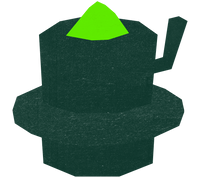

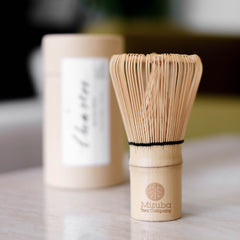
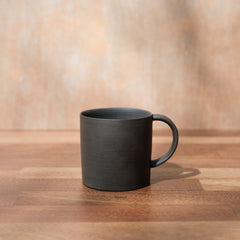
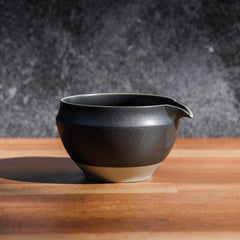
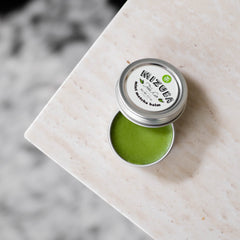
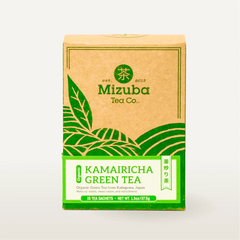



Leave a comment